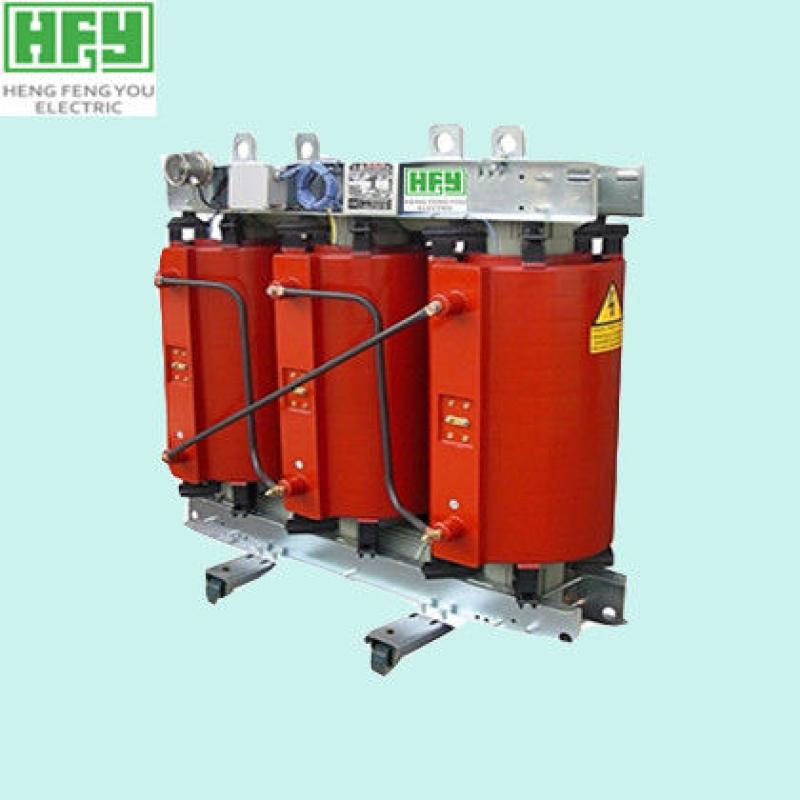What are the electrical specifications for a dry type distribution transformer?
Electrical specifications for dry-type distribution transformers can vary depending on the specific requirements and standards set by the manufacturer, local codes, and the intended application. However, there are common electrical specifications and parameters that you should consider when specifying a dry-type distribution transformer. Here are some of the key electrical specifications:
Transformer Rating: The transformer's rating is specified in terms of apparent power, usually given in volt-amperes (VA) or kilovolt-amperes (kVA). The rating should match the load it will be serving.
Primary Voltage: The primary voltage is the voltage at which the transformer will be connected to the power source. The specific voltage will depend on your electrical system and application.
Secondary Voltage: The secondary voltage is the output voltage of the transformer. It should match the requirements of the connected load.
Frequency: The standard frequency in most regions is 60 Hz (hertz) in the United States and 50 Hz in many other countries. Ensure that the transformer is designed for the correct frequency.
Impedance: The transformer's impedance is typically specified as a percentage, indicating its ability to withstand short circuits. Lower impedance values mean better short-circuit strength.
Temperature Rise: The temperature rise of the transformer, typically specified in degrees Celsius or Fahrenheit, defines how much the transformer's temperature will increase above the ambient temperature when fully loaded.
Insulation Class: Transformers have different insulation classes (e.g., Class A, Class B, Class F) that indicate the maximum temperature the insulation can withstand.
Enclosure and Protection: Specify the type of enclosure (e.g., NEMA 1, NEMA 3R) based on the transformer's location and environmental conditions. Consider whether it needs additional protection from elements like dust and moisture.
Efficiency: Transformers have an efficiency rating, typically expressed as a percentage, indicating how efficiently they convert electrical power. Higher efficiency is desirable to reduce energy losses.
Sound Level: If the transformer will be installed in an area with noise restrictions, consider the sound level rating, often specified in decibels (dB).
Cooling Method: Specify the cooling method, which can be natural convection (air-cooled) or forced air (fan-cooled). The choice depends on the application and load.
Winding Material: The windings can be made of copper or aluminum. Copper is a better conductor but more expensive.
Connection Configuration: Specify the connection configuration, such as delta-delta, delta-wye, or wye-wye, depending on the electrical system and load.
Harmonics Tolerance: Some transformers are designed to handle harmonic distortions in the electrical system. Specify if your system requires this capability.
Special Features: Depending on the application, you may need specific features like tap changers, surge arrestors, or other accessories.
Compliance with Standards: Ensure that the transformer complies with relevant safety and performance standards, such as ANSI, IEEE, NEMA, and local codes and regulations.
It's essential to work with a qualified electrical engineer or a transformer manufacturer to select the appropriate transformer with the right electrical specifications for your specific needs. Consider factors such as load characteristics, voltage regulation, and any unique requirements for your application when specifying a dry-type distribution transformer.
Electrical Specifications for Dry Type Distribution Transformers
Dry type distribution transformers are crucial components in electrical power distribution systems, stepping down high voltage electricity to levels suitable for utilization in homes, businesses, and industrial facilities. These transformers are characterized by their use of solid insulating materials instead of liquid coolants, offering several advantages over conventional oil-filled transformers.
Key Electrical Specifications
Several key electrical specifications define the performance and capabilities of dry type distribution transformers:
Primary Voltage: The voltage level at which electricity enters the transformer, typically ranging from 2.4 kV to 34.5 kV.
Secondary Voltage: The voltage level at which electricity exits the transformer, typically ranging from 120 V to 600 V.
KVA Rating: The transformer's capacity to handle apparent power, measured in kilovolt-amperes (kVA).
Temperature Rise: The maximum allowable temperature increase above ambient temperature during operation, typically specified in degrees Celsius (°C).
Efficiency: The transformer's ability to convert electrical energy from input to output, expressed as a percentage.
Impedance: The opposition to the flow of alternating current in the transformer, measured in ohms (Ω).
Vector Group: The arrangement of the transformer's windings, determining the phase relationship between the primary and secondary voltages.
Insulation Class: The transformer's ability to withstand voltage stresses, classified into insulation classes such as A, E, and H.
Key Characteristics and Parameters of Dry Type Transformers
Dry type distribution transformers offer several distinct characteristics and parameters that set them apart from oil-filled transformers:
Fire Safety: Dry type transformers eliminate the risk of fire or explosion associated with oil leaks or spills, making them suitable for installations with stringent fire safety requirements.
Environmentally Friendly: The absence of liquid coolants reduces environmental concerns related to leaks or disposal, promoting a greener approach to power distribution.
Maintenance-Free: Dry type transformers generally require less maintenance compared to oil-filled transformers, as they do not necessitate oil level monitoring or filtration.
Indoor Applications: Dry type transformers are primarily designed for indoor installations due to their susceptibility to moisture and environmental factors.
Noise Reduction: Dry type transformers typically operate with lower noise levels than oil-filled transformers, making them suitable for noise-sensitive environments.
Understanding the Technical Details of Dry Type Distribution Transformers
To fully grasp the technical details of dry type distribution transformers, it is essential to understand the various components and their functions:
Core: The core, typically made of laminated steel, forms the magnetic circuit of the transformer, facilitating the transfer of energy between the primary and secondary windings.
Windings: The windings, made of insulated copper or aluminum conductors, are wrapped around the core, creating the primary and secondary circuits.
Insulation: Various insulating materials, such as epoxy resin, mica, or fiberglass, provide electrical isolation between the windings and the core, preventing short circuits.
Enclosure: The enclosure, typically made of metal or non-metallic materials, protects the internal components from environmental factors and provides mounting points for installation.
Terminals: Terminals provide the connection points for the primary and secondary circuits, allowing the transformer to be integrated into the power distribution system.
Understanding the technical specifications and characteristics of dry type distribution transformers is crucial for selecting the appropriate transformer for specific applications. By considering factors such as voltage requirements, kVA rating, and environmental conditions, engineers and technicians can ensure that the chosen transformer meets the electrical and safety requirements of the installation.












